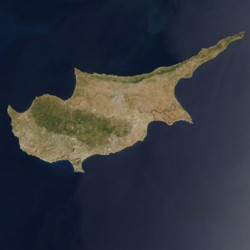Religious history of Turkish Cypriots
The Ottoman Empire introduced a minority Turkish population into the predominantly Greek culture of Cyprus. The Turkish sub-community, today about 18 %, has endured times of colonial rule and civil strife, to which the community's religious identity evolved in response. Funded by the EU, the project 'Analysis of constructions of religious identities among Turks in Cyprus (1925-2010)' (ACRIT CY) aimed to trace this evolution. The study took an unconventional track, being one of few to investigate Cypriot Islam as part of the varying religious intensity among Turks. Focusing on the period 1925–2010, the project ran for two years to August 2013. Document analysis was more restricted than planned. Reasons included the difficulty of digitising the Arabic script formerly used to render the Turkish language, which remained in use decades after the official changeover. Other Turkish documents in Roman script were of poor quality and similarly unable to be digitised. Nevertheless, the search for narrative was productive. The investigation period showed fluctuations in degree and type of religiosity. During the British Colonial period, the Cypriot Muslim authorities had a low degree of influence. Hence, the period illustrated beliefs and practices shared with the bulk of the island's Greek population. Until the 1950s, such fusion was especially prevalent among women and children. Men used more orthodox institutions to further Turkish–Cypriot politics, and the movement became stronger and more nationalistic with the end of British rule in 1960. Between then and the Turkish occupation of Northern Cyprus in 1974, Cypriot Islam was at its lowest ebb. After the island's partition, Turkish Cyprus was strongly influenced by Turkey, which grew more religious and in a conservative style after 1980. To maintain their own identity, Turkish Cypriots responded by becoming less religious. More recently, mystical/spiritual congregations of an Islamic style have been prospering throughout the island. Such gatherings, led by Turkish Cypriots, are independent of the Turkish-controlled authorities, and more in line with traditional Cypriot Islam. The ACRIT CY project yielded a better understanding of Cypriot Islam in response to, and sometimes at odds with, religious forces in Turkey. The work has wider ramifications for understanding Islam in Europe.




